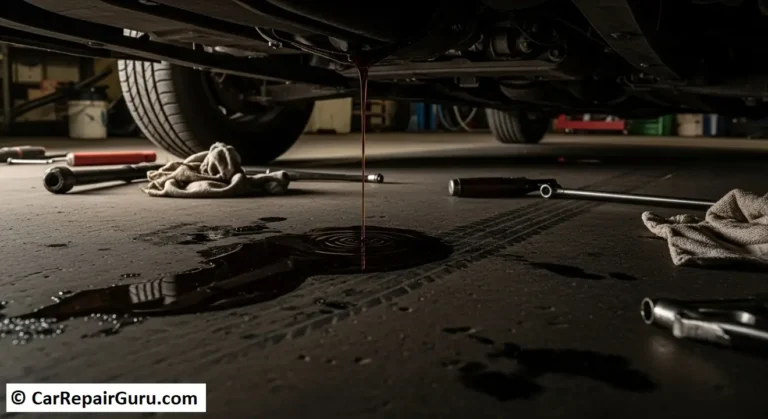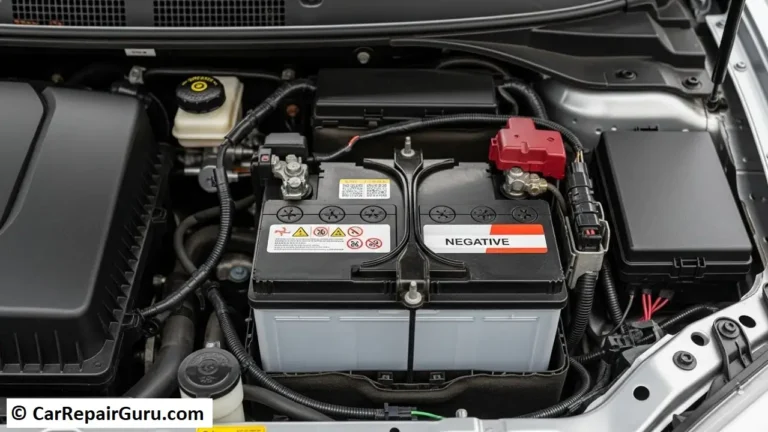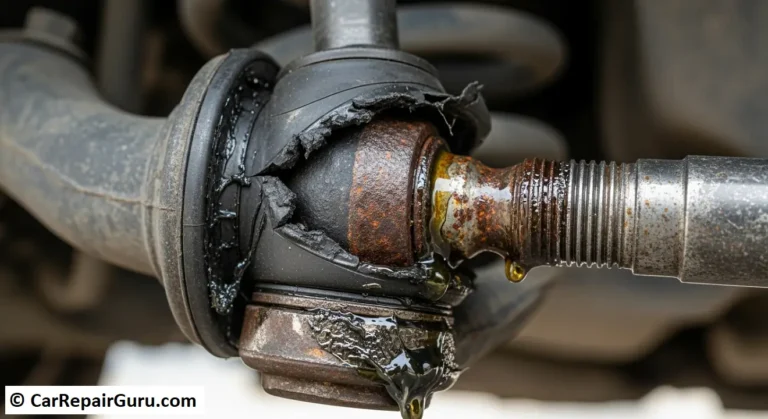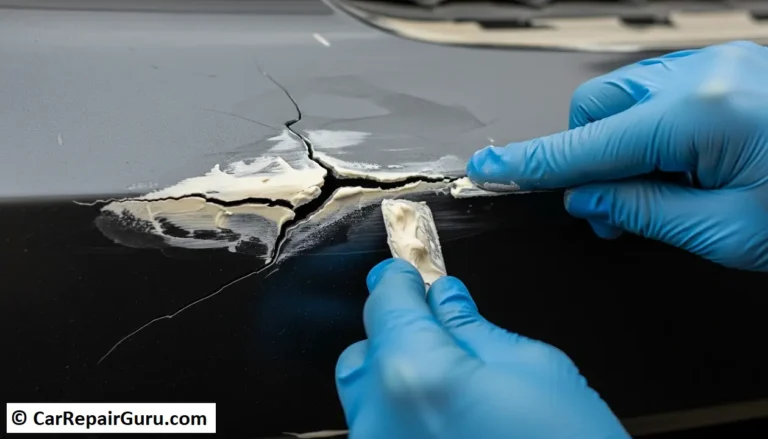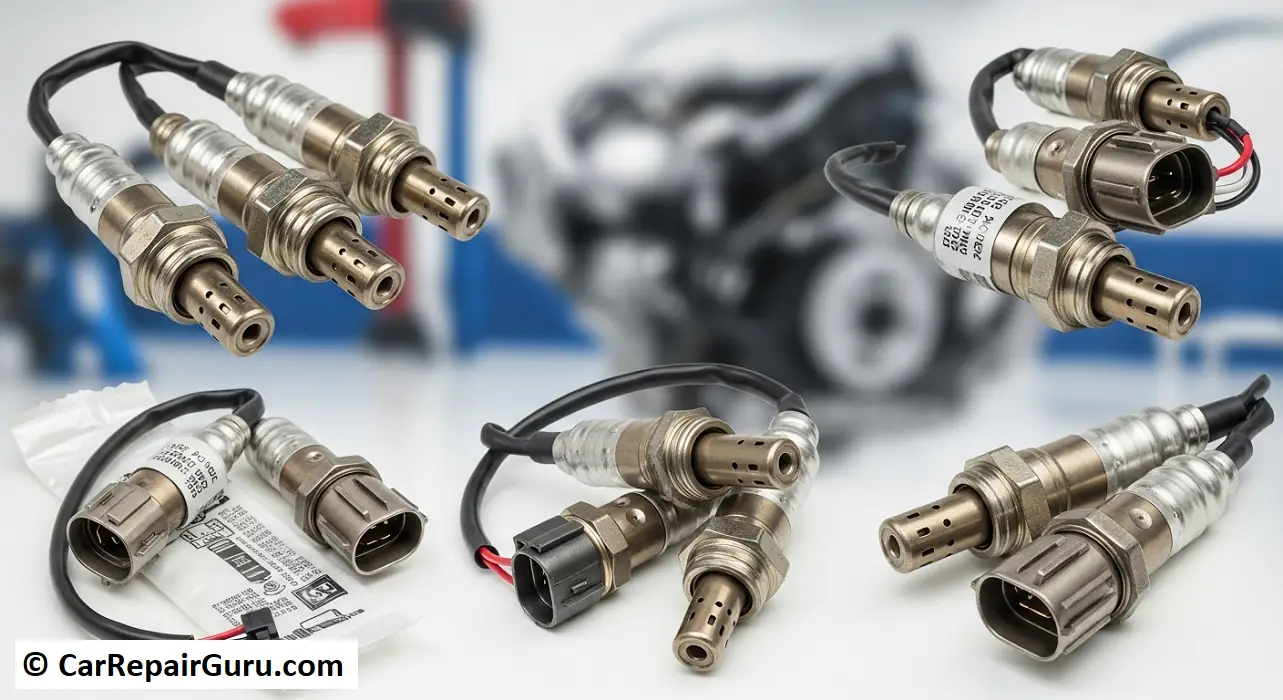
That glowing, amber-colored check engine light on your dashboard—it’s a universal symbol for car trouble and unexpected expenses. While it can signal a dozen different issues, one of the most common culprits is a small, unassuming part you may have never heard of: the oxygen sensor.
Often called an O2 sensor, this device is the unsung hero of your car’s engine management and emissions control systems. Think of it as a critical gatekeeper, constantly monitoring your exhaust and sending vital information back to your car’s brain. When it works correctly, your engine runs smoothly, sips fuel efficiently, and keeps harmful pollutants in check. But when it fails, it can trigger a cascade of problems, from a rough idle to a failed emissions test.
Don’t let the technical name intimidate you. This guide will demystify the oxygen sensor, breaking down everything you need to know. We’ll cover what it does, the telltale symptoms of a bad O2 sensor, how to diagnose the problem, and what you can expect for a replacement, whether you tackle it yourself or head to the shop.
What is an Oxygen Sensor and How Does It Work?
At its core, an oxygen sensor is a simple but brilliant electronic device. Its main job is to measure the amount of unburnt oxygen leaving your engine through the exhaust pipe. Think of it as the “nose” of your car’s exhaust system—it’s constantly sniffing the gases to see if the engine is burning fuel correctly.
This information is crucial for maintaining the perfect air-fuel ratio, which is the ideal balance of air and gasoline needed for a clean, efficient combustion. The sensor generates a tiny voltage signal based on the oxygen level it detects and sends it directly to your car’s main computer, the Engine Control Unit (ECU).
This creates a continuous feedback loop:
- The O2 sensor measures oxygen in the exhaust.
- It sends a voltage signal to the ECU.
- The ECU interprets this signal to determine if the air-fuel mixture is:
- Rich: Too much fuel, not enough oxygen. The sensor sends a high voltage signal.
- Lean: Too much oxygen, not enough fuel. The sensor sends a low voltage signal.
- The ECU instantly adjusts the amount of fuel the injectors spray into the engine to bring the ratio back to the perfect level.
This all happens in milliseconds, thousands of times per minute, ensuring your engine is always running at peak efficiency.
Types of Oxygen Sensors – Upstream vs. Downstream
If you look up an oxygen sensor for your car, you’ll quickly run into terms like “upstream,” “downstream,” “Sensor 1,” and “Sensor 2.” This can be confusing, but the difference is straightforward and based entirely on location and function. Most modern cars have at least two.
Upstream Oxygen Sensor (Sensor 1) – The Fuel Control Sensor
- Location: You’ll find this sensor in the exhaust manifold or downpipe, before the catalytic converter. It’s the first one in line to sample the exhaust gases directly from the engine.
- Function: This is the primary sensor. Its readings are the ones the ECU uses to make those real-time adjustments to the air-fuel ratio. A faulty upstream sensor has a direct and immediate impact on your car’s performance and fuel economy. This is why it’s sometimes called an air-fuel ratio sensor. When a mechanic mentions “Bank 1 Sensor 1,” they are referring to the upstream sensor on the first bank of cylinders.
Downstream Oxygen Sensor (Sensor 2) – The Emissions Monitor
- Location: This sensor is located after the catalytic converter.
- Function: The downstream sensor has a different job. It doesn’t control the fuel mixture; it monitors the efficiency of the catalytic converter. It measures the oxygen levels after the exhaust has passed through the converter and compares its reading to the upstream sensor’s data. If the catalytic converter is working properly, the downstream sensor’s reading will be steady and show very little oxygen. If its readings start to mirror the upstream sensor, it tells the ECU that the converter isn’t cleaning the exhaust effectively, which will trigger a check engine light.
7 Telltale Symptoms of a Bad Oxygen Sensor
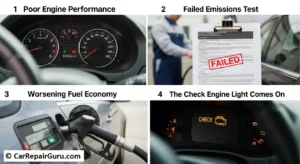
A failing O2 sensor rarely dies suddenly. It usually degrades over time, giving you clues that something is wrong. Here are the most common symptoms to watch out for.
- The Check Engine Light Comes On
This is the most obvious sign. The ECU detects a problem with the sensor’s signal—or lack thereof—and illuminates the light on your dash to alert you. - Worsening Fuel Economy
If you find yourself visiting the gas station more often, a bad O2 sensor could be the culprit. When the ECU doesn’t get accurate data, it defaults to a “rich” fuel mixture to be safe, meaning it injects more fuel than necessary. This waste of gas can cause your MPG to drop by as much as 40%. - Rough Idle and Engine Misfires
An incorrect air-fuel ratio can disrupt the engine’s smooth operation. You might notice your car stumbling, vibrating, or hesitating at a stoplight. In some cases, it can even cause the engine to misfire as it struggles with the imbalanced mixture. - Failed Emissions Test
The oxygen sensor is a cornerstone of your vehicle’s emissions control system. If it’s not working, your car will release a higher amount of harmful pollutants like carbon monoxide and hydrocarbons, leading to an automatic failure at the emissions testing center. - Poor Engine Performance
Does your car feel sluggish when you try to accelerate? A faulty O2 sensor can cause a noticeable lack of power. The engine isn’t getting the right fuel mix for optimal combustion, making it feel weak and unresponsive. - A “Rotten Egg” Smell
That distinct sulfur or rotten egg smell from your exhaust is a serious red flag. It means the catalytic converter is overheating and failing because it’s being fed an overly rich fuel mixture. A bad O2 sensor is a primary cause of this destructive condition. - Premature Catalytic Converter Failure
This is the most expensive consequence of ignoring a bad oxygen sensor. Continuously running a rich mixture will overwhelm, overheat, and eventually melt the internal components of your catalytic converter. A sensor that costs under $100 can lead to a repair that costs over $1,500 if left unchecked.
How to Diagnose a Faulty O2 Sensor
While the symptoms above are strong indicators, a proper diagnosis is key to avoiding unnecessary repairs.
Using an OBD-II Scanner – The Easiest Way
The most reliable first step is to scan your car’s computer for Diagnostic Trouble Codes (DTCs). You can buy an affordable OBD-II scanner online or have an auto parts store scan it for free. Plug the scanner into the port under your dashboard and read the codes.
Common O2 sensor-related codes include:
- P0135: O2 Sensor Heater Circuit Malfunction (Bank 1, Sensor 1) – A problem with the upstream sensor’s internal heater.
- P0141: O2 Sensor Heater Circuit Malfunction (Bank 1, Sensor 2) – A problem with the downstream sensor’s heater.
- P0171: System Too Lean (Bank 1) – The sensor is telling the ECU there’s too much air.
- P0172: System Too Rich (Bank 1) – The sensor is reporting too much fuel.
- P0420: Catalyst System Efficiency Below Threshold – While this points to the converter, it’s often caused by a lazy or failing downstream O2 sensor.
Visual Inspection
Sometimes the problem is physical. Safely get under your vehicle and look at the sensor. Check for frayed or melted wires, heavy corrosion on the sensor body, or signs of oil or coolant contamination, which can ruin the sensor.
Professional Testing
A mechanic can perform more advanced tests using a multimeter or oscilloscope to view the sensor’s live voltage signal. A healthy upstream sensor will show a rapidly fluctuating voltage, while a failing one might be slow, stuck, or show no signal at all.
Oxygen Sensor Replacement – DIY vs. Professional

Once you’ve confirmed the sensor is bad, you have two choices: replace it yourself or have a professional do it.
DIY Replacement – A Step-by-Step Guide
For a moderately experienced DIYer, replacing an O2 sensor is a very manageable job.
- Difficulty Level: Moderate (mainly due to sensor location and potential for it to be seized in the exhaust).
- Tools Needed:
- Special O2 Sensor Socket: This is a must-have. It’s a deep socket with a slit down the side for the wire.
- Ratchet and extensions
- Penetrating oil (like PB B’laster or WD-40)
- Safety glasses and gloves
- Anti-seize compound (many new sensors come with it pre-applied)
- Step-by-Step Instructions:
- Locate the Sensor: Identify if you are replacing the upstream (before the cat) or downstream (after the cat) sensor.
- Safety First: Let the exhaust cool completely. Disconnect the negative terminal of your car battery.
- Soak the Threads: Spray a generous amount of penetrating oil on the base of the old sensor where it screws into the exhaust pipe. Let it sit for at least 15-20 minutes—longer is better.
- Disconnect the Electrical Plug: Find the wire coming from the sensor and unplug the connector. Be gentle to avoid breaking the plastic clip.
- Remove the Old Sensor: Place the O2 sensor socket over the sensor, attach your ratchet, and turn counter-clockwise. It may take some force to break it loose.
- Prepare the New Sensor: Check if the threads on the new sensor have anti-seize compound. If not, apply a small amount to the threads only, avoiding the sensor tip.
- Install the New Sensor: Carefully thread the new sensor in by hand to avoid cross-threading. Then, use the socket to tighten it to the manufacturer’s specified torque (usually around 30-35 ft-lbs).
- Reconnect Everything: Plug the electrical connector back in and reconnect your battery terminal.
- Clear the Code: Use your OBD-II scanner to clear the check engine light.
Professional Replacement Cost
If you’re not comfortable working under your car, a mechanic can do the job quickly.
- Cost Breakdown:
- Parts Cost: The sensor itself can cost anywhere from $20 to $150. OEM sensors or high-performance wideband sensors are more expensive. Brands like Bosch, Denso, and NTK are trusted original equipment suppliers.
- Labor Cost: A mechanic will typically charge for 0.5 to 1.5 hours of labor, which can range from $50 to $150 depending on their hourly rate and the sensor’s accessibility.
- Total Estimated Cost: You can expect the total oxygen sensor replacement cost to be between $70 and $300 per sensor. The price varies based on your vehicle’s make and model and where you get the work done.
Don’t Ignore Your O2 Sensor
The humble oxygen sensor plays an outsized role in the health of your vehicle. It’s the key to maintaining a perfect balance between power, efficiency, and environmental responsibility. Ignoring the symptoms of a failing O2 sensor won’t make the problem go away; it will only lead to wasted fuel, a poorly running car, and potentially a multi-thousand-dollar repair bill for a new catalytic converter.
Whether you’re a hands-on DIYer ready to grab a wrench or you prefer to trust a professional, addressing a faulty oxygen sensor is a smart, proactive investment in your car’s longevity and performance. That check engine light isn’t just a nuisance—it’s your car’s way of asking for help. Listening to it can save you a lot of time, money, and headaches down the road.
Frequently Asked Questions about Oxygen Sensors
How long do oxygen sensors last?
Modern oxygen sensors are built to last a long time, typically between 60,000 and 100,000 miles. However, they can fail prematurely due to contamination from a coolant or oil leak, or from using fuel with high levels of silicone additives.
Can I drive with a bad O2 sensor?
Yes, you can technically drive with a bad O2 sensor, but it is highly inadvisable. Your car will be in a “limp mode” where the ECU uses default settings, resulting in terrible fuel economy, higher emissions, and poor performance. More importantly, you risk causing expensive, long-term damage to your catalytic converter.
Can cleaning an oxygen sensor fix it?
While you might see videos online about cleaning O2 sensors, it is generally not a reliable or recommended solution. The sensing element is very delicate, and trying to clean it with chemicals or a wire brush can easily cause permanent damage. For the cost of a new sensor, replacement is always the better, more reliable option.
How many oxygen sensors does my car have?
Most 4-cylinder engines made since 1996 have two oxygen sensors: one upstream and one downstream. V6 and V8 engines have two “banks” of cylinders, so they typically have four sensors: an upstream and downstream sensor for each bank.
